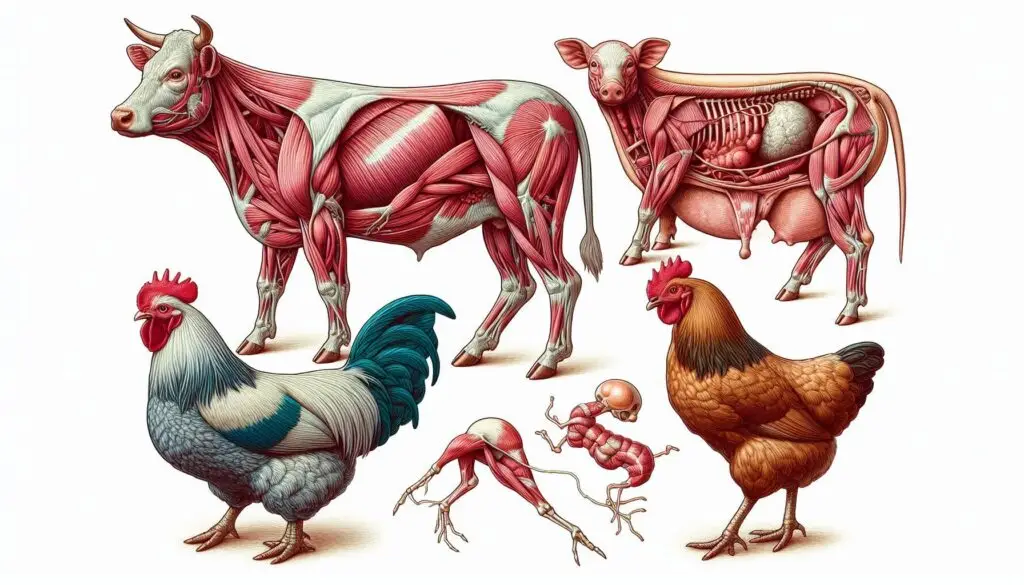Ovaries in True Anoestrus

True anoestrus is a significant reproductive condition affecting various livestock species, including cattle and pigs. It is characterized by the absence of estrous cycles due to inactive ovaries. Understanding the characteristics of ovaries in true anoestrus is essential for farmers and veterinarians aiming to improve reproductive health in their animals. This article delves into the key features, causes, and management strategies associated with true anoestrus.
What is True Anoestrus?
True anoestrus refers to a state where there is a complete absence of estrous cycles. In this condition, the ovaries do not produce mature follicles or hormones necessary for ovulation. The result is that animals do not exhibit signs of heat or estrus behavior.
Causes of True Anoestrus
Several factors can lead to true anoestrus. Understanding these causes can help in managing and preventing this condition.
Nutritional Deficiencies
Nutritional status plays a crucial role in reproductive health. Animals that do not receive adequate nutrition may experience disruptions in their reproductive cycles. For instance, deficiencies in energy, protein, or essential vitamins and minerals can lead to poor ovarian function.
For more on the impact of nutrition on reproduction, check out this article from The University of Florida.
Pathological Conditions
Chronic diseases or infections can affect the reproductive system’s functionality. Conditions such as metritis or endometritis can lead to hormonal imbalances that inhibit ovarian activity.
A detailed overview of reproductive diseases can be found at Merck Veterinary Manual.
Management Practices
Improper management practices can also contribute to true anoestrus. For example, excessive suckling by calves can suppress the mother’s estrous cycle. Additionally, inadequate observation during breeding seasons may lead to missed opportunities for breeding.
Physiological Mechanisms
The physiological mechanisms behind true anoestrus involve hormonal regulation. Normally, the hypothalamus releases gonadotropin-releasing hormone (GnRH), stimulating the pituitary gland to produce LH and FSH. These hormones are vital for follicular development and ovulation.
In true anoestrus, there is often a failure in this hormonal cascade. Insufficient GnRH leads to low levels of LH and FSH, resulting in underdeveloped follicles and a lack of ovulatory activity.
Characteristics of Ovaries in True Anoestrus
Understanding the specific characteristics of ovaries during true anoestrus helps identify this condition early.
Size and Appearance
Ovaries affected by true anoestrus are typically smaller than those in normal cycling animals. They may appear smooth and lack the typical structures associated with active ovaries.
Follicular Development
In normal conditions, ovaries develop multiple follicles that grow and eventually ovulate. However, in true anoestrus:
- There are few or no visible follicles.
- Any present follicles are usually small and non-functional.
This lack of follicular development indicates that the ovaries are not responding to hormonal signals effectively.
Hormonal Activity
The hormonal profile during true anoestrus is markedly different from that during normal estrous cycles:
- Progesterone Levels: These are typically low because there is no corpus luteum formation.
- Estrogen Levels: Estrogen production is also reduced due to insufficient follicular development.
For a comprehensive understanding of hormonal changes during the estrous cycle, refer to this resource from Penn State Extension.
Behavioral Indicators
Animals experiencing true anoestrus do not exhibit typical signs of heat or estrus behavior:
- They may not show interest in mating.
- There are no physical signs such as swelling of the vulva or behavioral changes associated with estrus.
These behavioral indicators are crucial for identifying reproductive issues early on.
Diagnosis of True Anoestrus
Diagnosing true anoestrus involves several steps:
Clinical Examination
Veterinarians will perform a thorough clinical examination to assess overall health and reproductive status. This includes:
- Palpation of the ovaries via rectal examination.
- Assessment of body condition score (BCS) to evaluate nutritional status.
Hormonal Testing
Hormonal assays can help determine levels of LH, FSH, progesterone, and estrogen. These tests provide insight into ovarian function and help confirm a diagnosis of true anoestrus.
Ultrasound Imaging
Ultrasound technology allows veterinarians to visualize ovarian structures directly. This non-invasive method provides real-time information about follicular development and overall ovarian health.
For more information on diagnostic techniques, visit The Merck Veterinary Manual.
Management Strategies for True Anoestrus
Effective management strategies can help mitigate the effects of true anoestrus and promote reproductive health.
Nutritional Management
Ensuring that animals receive adequate nutrition is vital for restoring ovarian function:
- Provide balanced diets rich in energy, protein, vitamins, and minerals.
- Regularly assess body condition scores to monitor nutritional adequacy.
For guidance on formulating diets for livestock, check out Nutritional Guidelines from USDA.
Health Monitoring
Regular health checks can help identify underlying diseases early:
- Implement vaccination programs to prevent infectious diseases.
- Monitor for signs of metabolic disorders that could affect reproduction.
Breeding Management
Adjusting breeding management practices can improve outcomes:
- Limit suckling frequency to allow cows to return to estrous sooner.
- Use artificial insemination (AI) strategically during optimal breeding windows.
For more insights on breeding management practices, refer to The Cattle Site.
Conclusion
True anoestrus presents significant challenges in livestock reproduction. By understanding the characteristics of ovaries during this condition—such as size, appearance, hormonal activity, and behavioral indicators—farmers and veterinarians can take proactive measures. Proper nutritional management, health monitoring, and effective breeding practices are essential strategies for mitigating this issue.
More from Animal Reproduction:
https://wiseias.com/semen-collection-in-dogs/https://wiseias.com/semen-collection-in-stallions/




Responses